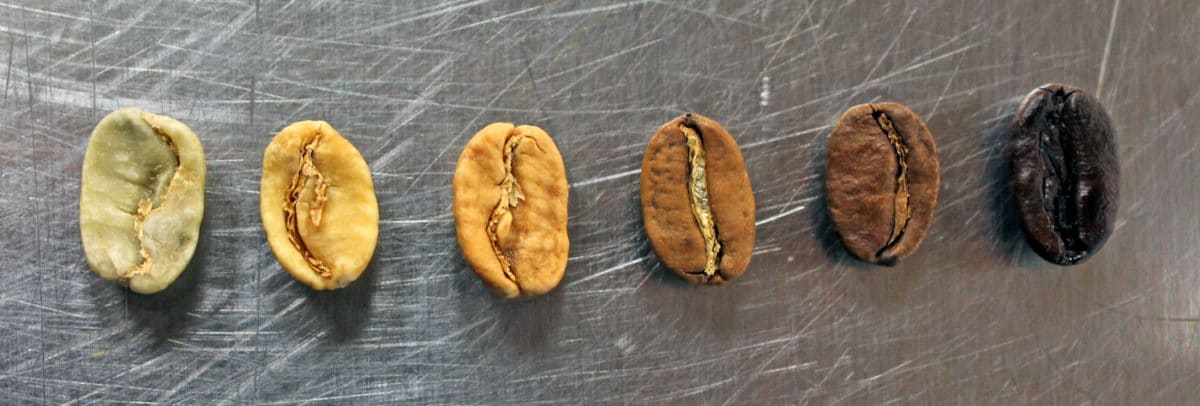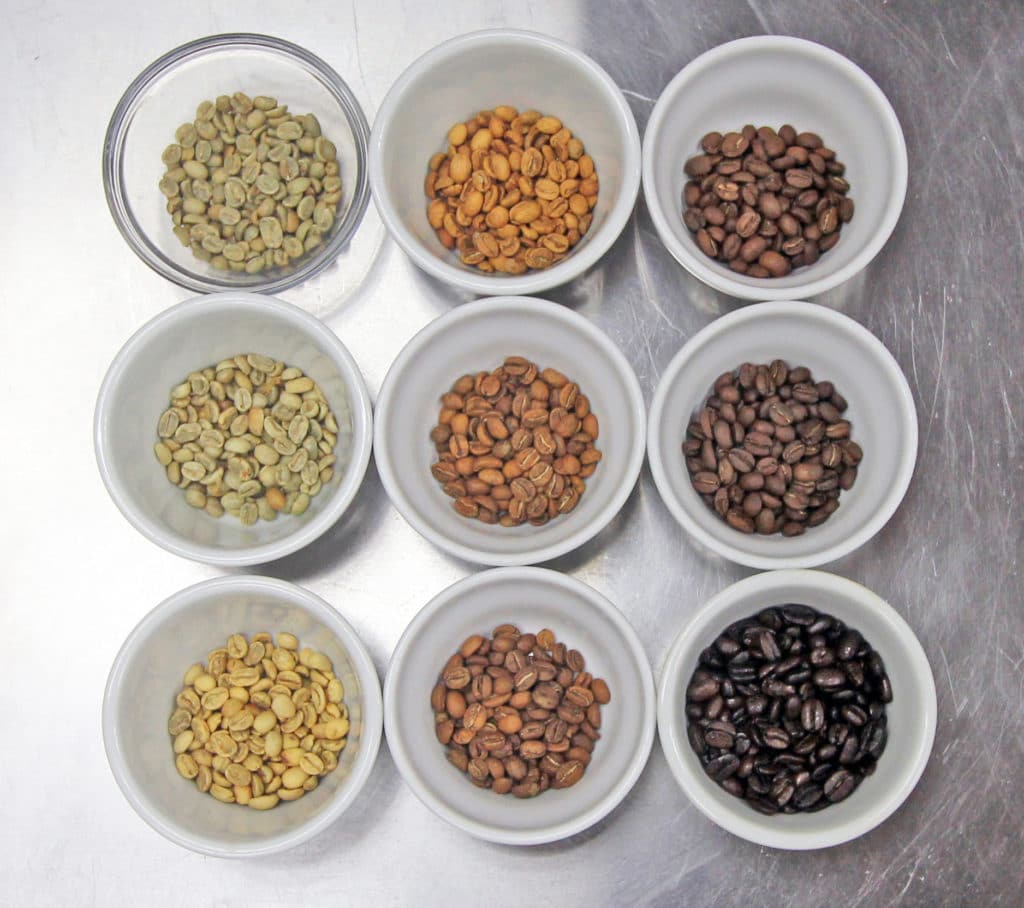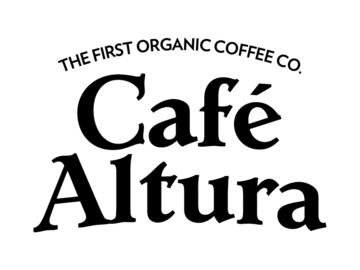
The Roasting Phases of Coffee
Coffee roasting is something of an arcane process; little discussed, oft misunderstood, and necessary to transform green coffee into the brown liquid we all know and love. Since most people don’t know what a coffee roaster looks like, let alone how coffee is roasted, in this blog post, I’m going to detail the coffee roasting methodology we use at Cafe Altura. I’ll do this by giving you an overview of the three main phases of roasting (drying, caramelization, and development), and subsequently detail how their manipulation affects coffee flavor. In so doing, I hope to demystify coffee roasting a little bit and clue you into how we at Cafe Altura modulate the roasting process to produce the many different flavors you taste in your cup.
Before I begin, a disclaimer; there are as many theories and articulations of coffee roasting as there are coffee roasters. What follows is merely what we at Cafe Altura believe based on our roasting machines, experience, and product set.
Coffee Roasters
To accurately discuss the phases of coffee roasting, one must know what a coffee roaster is. Thankfully, for our purposes a coffee roaster is simple to define; we use drum roasters, which contain large rotating cylinders, usually made of steel, heated by flame. The roaster operator modulates the flame through adjustments to a gas valve, and on certain roasters, can also change the amount of air flowing through the roasting chamber. The goal of the roaster operator is to use these tools to make the coffee reach a certain temperature in a certain amount of time. There are many variations on this, of course, but our setup is the very common; drum roasters are the industry standard.
Drying Phase
Now that we know what a roaster is, we can move on to the first stage of the roasting process; drying phase. As readers of this blog will know, coffee comes to us in its raw green form, which is high in moisture; the average green coffee is around 10-12% water when it reaches us. The first phase of the roast is spent driving much of this water out of the bean so that flavor may be developed in successive phases. The phase begins when coffee is charged into the roaster (charge is the term roasters use for the start of a batch), and ends when the coffee has changed color from green to yellow, around 300 degrees Fahrenheit. While the specific chemical reactions occurring during drying phase are not thought to have a large effect on coffee’s final flavor, this does not mean that drying phase can be neglected; heat applied during the drying phase sets the momentum for the entire roast, and as such, achieving proper velocity through this phase is crucial to accurate and consistent roasting. In other words, though it does not itself directly modulate flavor, the length and momentum of the drying phase affect the length and momentum the phases which follow it, which in turn modulate flavor; a finely tuned drying phase is the necessary precondition of successful caramelization and development, which makes it an indispensably crucial phase of a given roast. In general, if a coffee moves fast through the drying phase, it will move fast through the rest of the roast as well; the same can be said if the roast moves slowly through drying phase.
Caramelization Phase
Caramelization phase is generally accepted to be the period which ranges from when the coffee is fully yellow (around 300F) to first crack (when the water pressure created by heating the coffee causes it to burst open), which occurs most often between 385-395F. It is so named because it is thought to be the phase of the roast during which many of the sugars present in a raw coffee bean are broken down, or caramelized, because of their exposure to the high temperatures inside of the roaster. The most important set of these caramelization reactions are known as the Maillard reactions, a type of non-enzymatic browning reaction present in many different types of food processing. Much about the reactions occurring during this roasting phase is not well understood, but controlling the length of this phase, as well as the rate at which it occurs is crucial to effective roasting. In our roasting, we find that the length of the caramelization phase most closely correlates to the coffee’s expression of body and sweetness. In general, the faster a coffee proceeds through caramelization phase, the more it will tend to express a lighter body and higher sweetness; the slower a coffee proceeds through caramelization the more it tends to express higher body and lower sweetness. This is, of course, an oversimplification, but is the rule of thumb we follow when we think about caramelization.

Development Phase
Development is the final phase of the roast, lasting from first crack to the end of the roasting cycle; the end temperature of the roast will depend on the desired roast degree. Development is generally accepted to be the phase of the roast most directly responsible for flavor modulation and development. As the coffee cracks during this phase, numerous chemical reactions occur very rapidly, and the rate at which these reactions occur is largely defined by the momentum set in earlier roast phases. These reactions, along with a coffee’s drop temperature (the temperature of the roaster when the operator empties the coffee into the cooling tray) most clearly modulate a coffee’s sweetness and acidity; in general, the shorter a coffee spends in development and the lower its drop temperature, the more it will express high sweetness and acidity, and the longer it spends in development and the higher its drop temperature, the more it will express more caramelized or roasted character and lower acidity. To put it in simple terms, this is the phase of a roast during which the lightness or darkness of a roast is determined.
When the lengths all these phases are combined, they form what we call a roast profile, or the set of temperature measurements at different times during the roast which the roaster operator is trying to achieve. As one might expect given the descriptions of the different roast phases, determining the way in which one should roast a specific coffee is a complicated subject. Every coffee is different, and some even directly disobey the rules of thumb outlined here. This is part of what makes coffee roasting so exciting, and we will return to the challenges and excitement of roast profiling in a future post. For now, though, I hope this post has been helpful in clarifying some of what goes into the process of roasting your coffee. In covering the three major roast phases, I hope to have given you some insight into the techniques we use to create our different products. Thanks for reading, and we’ll see you next time.
Article By : Bret Colman, Director of Coffee / Head Roaster, Cafe Altura Organic Coffee
